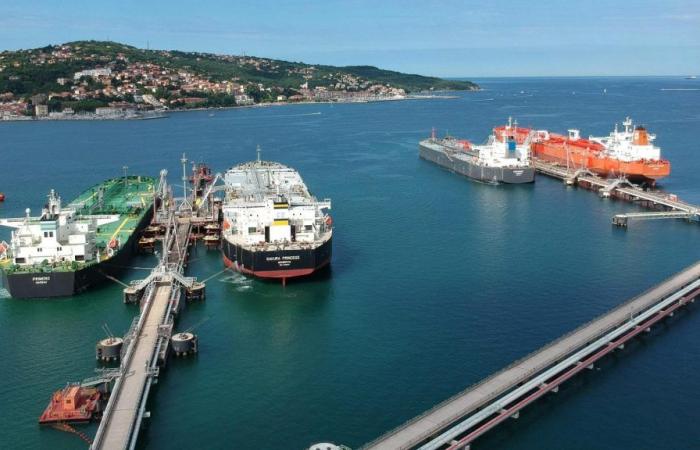The Siot (Tal group) Transalpine Oil Pipeline, which runs from the port of Trieste to the refineries in Central Europe, is celebrating 60 years of existence with the forecast of reaching 40 million tonnes of crude oil transported at the end of the year. We are far from the 2017 record with 42 million tonnes but in any case it is a result achieved in a complex global climate between wars on the outskirts of Europe and the Suez crisis. It should also be considered that in 2022 there was an accident at a refinery in Austria which blocked deliveries for four months.
On the geopolitical front, there are no consequences from the sanctions on Russian crude which “has never been important for the Trieste oil pipeline”, as specified by Alessio Lilli, president of Siot and general manager of the Tal group. In Trieste «oil arrives mainly from Kazakhstan, Libya and Azerbaijan». In the first five months of 2024 there was an increase in transits of 13.2%.
Siot was founded on 9 December 1964 and the construction of the pipeline ended in June 1967: throughout its history to date it has landed 1.7 billion tonnes of crude oil. Costing 192 million dollars at the time, the work was considered one of the largest private investments of the time. On 13 April 1967, the first oil tanker, Daphnella docked in the port of Trieste and on 3 October of the same year the first quantity of oil arrived in Ingolstadt in Bavaria. A few days ago, the 22,000th oil tanker Gemini Sun arrived in Trieste.
Trieste is increasingly strategic in supplying the economies of Central Europe with energy despite the complex geopolitical situation and amid new conflicts. The 2023 accounts of the Pipeline approved by the board of directors close with a profit of 3 million euros with 36.7 million tons of crude oil landed in 2023 from the 395 oil tankers that docked at the Marine Terminal.
In 2023 the international scenario was once again shaken by the armed conflict between the state of Israel and Hamas, which brought with it attacks by the Houthi rebels against merchant ships near the Suez Canal: «This meant that part of the maritime traffic was diverted onto the route that circumnavigates Africa, but the arrival of the oil tankers towards the company’s marine terminal was only marginally affected”, clarified Lilli. On the oil consumption front, Europe is recovering despite the German slowdown: «Oil consumption in the countries served by the Transalpine Pipeline in 2023 was substantially stable but the first five months of 2024 showed an increase of 13.2% compared to to the same period of 2023 regarding the quantities of crude oil transported”, said Lilli. A pace that will allow the planned traffic objectives to be achieved.
But above all there is an important phase of modernization of the terminal, as emerged from the accounts presented by Lilli at the Confindustria Alto Adriatico headquarters in Trieste. Siot, which manages the Italian part of the over 750 kilometers of energy infrastructure that runs from Trieste through Fvg and Austria to Austria, Germany and Czechia, is investing over 40 million in the modernization of the terminals (23 this year alone) . It is expected that by next year the works set by the 44.4 million agreement signed by Siot with Fincantieri, “an excellence of the territory”, for the redevelopment of the moorings of the oil terminal will be completed. The upgrade of the infrastructure, to be completed by 2025, includes the modernization of piers 1 and 2, each equipped with two berths for the oil tankers that supply crude oil to the refineries in Central Europe, satisfying Austria’s needs (90%) , Southern Germany (90%) and the Czech Republic (50%).
The operation, explained the president of Siot, will guarantee “the safety of our activities for the next decades”, making the Trieste base capable of also unloading new types of fuel. It will be the terminal of the future, “the most important hub in the Mediterranean for the maritime transport of crude oil, in line with the highest safety standards”. The works, it was explained, will guarantee the safety of the activities for the next decades and “will adapt to a continuous evolution of the market with new pumping systems to increase the flow capacity of the pipeline”. Meanwhile, the scope of the pipeline in central Europe is expanding. The Tal group in fact guarantees the independence of the Czech Republic from Russian oil thanks to an increase in the annual capacity of the pipeline by 4 million tons of crude oil.






